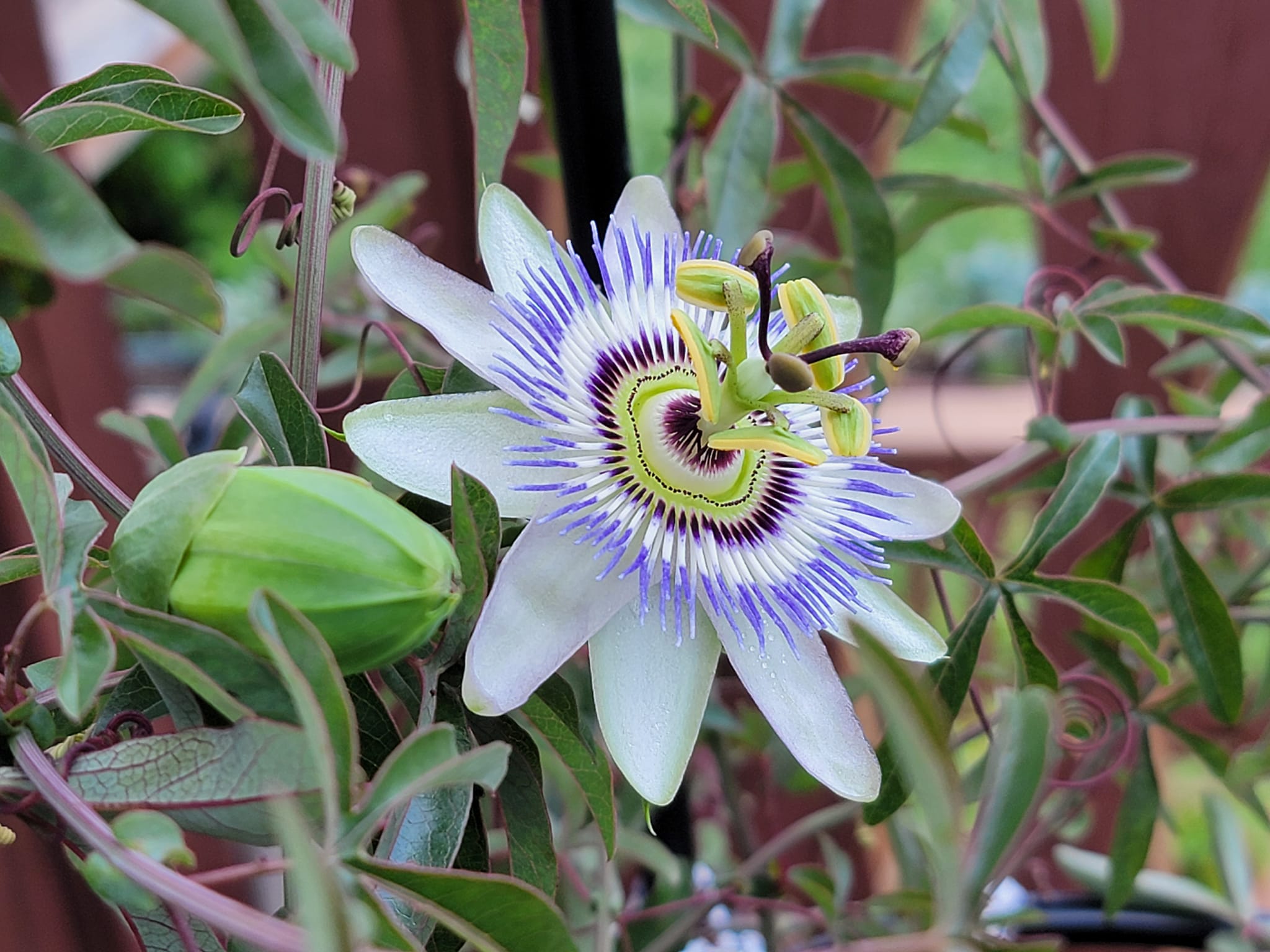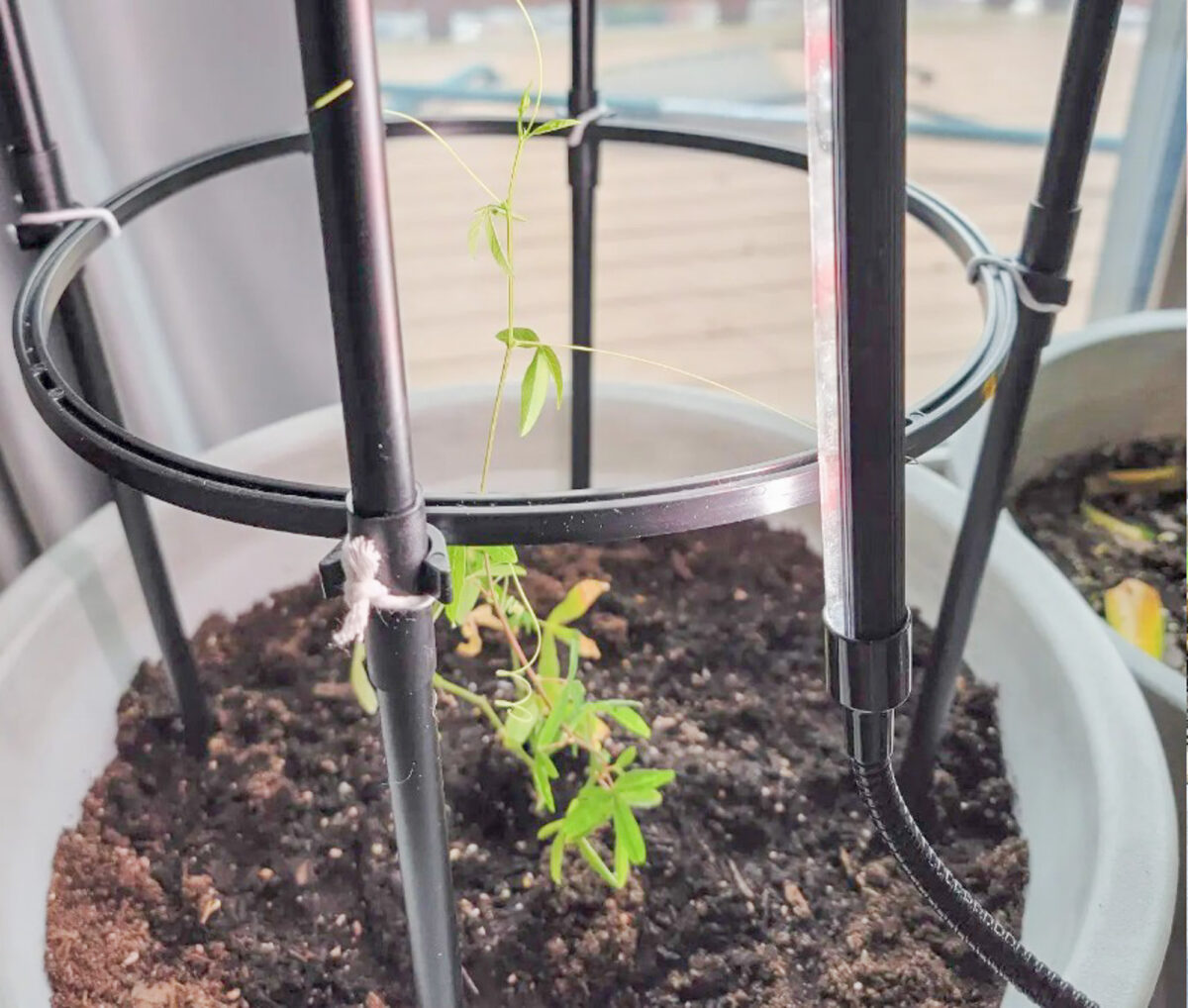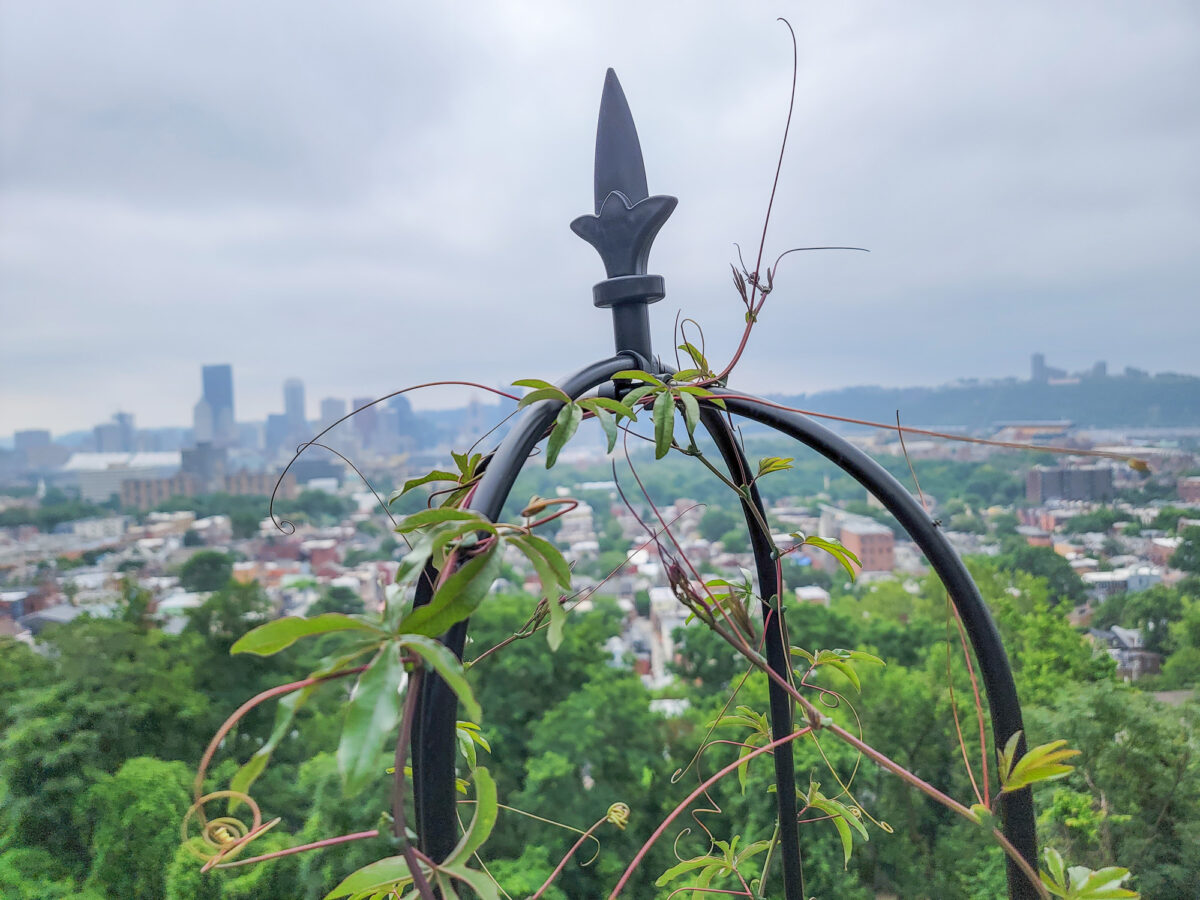Disclaimers: Our site uses demographic data, email opt-ins, display advertising, and affiliate links. Please check out our Terms and Conditions for more information.
Although we live in Zone 6b, I knew I always wanted tropical plants that we take in and out of the house seasonally.
For things like fruit trees, this is pretty simple. Plant a dwarf citrus tree in a large enough pot, take it out when the risk of freeze passes, give it a ton of natural light when indoors, and you're (probably) good to go. But what about vines? Many of our favorite tropical fruits, like passion fruit, do not grow on trees but on sprawling vines.
As a passion fruit vine was high on my list of must-haves, we simply found ourselves with an issue of figuring out how to make the sprawling vine work outside of its ideal Zone 9-11. As you may expect, moving a 40+ foot vine in and out as seasons change sounded like a challenge.
Although one answer was simply to acquire native Maypops for planting outside (these are North American passion flowers with cold tolerance down to approximately Zones 6-7 pending varietal), which we also did, I still wanted to have a proper passion fruit all the same.
So in this one, I wanted to share a bit more about how we planted our vine and, more importantly, share a passion fruit trellis idea that really allowed us to maximize our surface area while still being in a container!
Pot and Soil Selection for Passion Fruit
As with most plants, selecting the right pot and soil mix for passion fruit is your first step to success. The pot itself typically does two things:
First, the pot size inherently constrains the spread of the roots, and, if too small, may inhibit the growth of your vine. Our pots generally measure about 14-16″ wide at a minimum and we have not had any issues with limited growth for our trellis space.
Second, we typically prefer to work with plastic pots for any of our tropical plants only because they are exceptionally light even when they are larger in size. A large pot full of dirt and a fully grown plant is heavy enough as it is, so a plastic pot helps offset that a bit making for easier moving seasonally.
If you are looking to pick up a pot for your passion fruit vine, click here. If you are in a climate where you will bring your pot indoors in winter, don't forget a drip pan, too.
On the soil side of the spectrum, passion fruit follows a general trend we see with most tropical citrus plants- it wants free-draining soil. While you can get creative and build your own mix of free-draining, high-nutrient soil, we buy Miracle Gro Cactus, Palm, & Citrus Potting Mix plus a citrus plant fertilizer and move on. The composition is loose, allows water to drain rapidly, and has worked well with our vines so far.
Finally, it is worth the reminder that free-draining soil still needs a place to drain. As most pots (especially plastic ones) typically do not come with pre-drilled drain holes, you may need to grab your trusty drill and pop a few small holes in the bottom of your pot before filling it with dirt. Lifting up a six-foot-tall pot to drill holes in from the bottom because you forgot and already planted your passion fruit is a big mistake (not that we know this from experience or anything!).
A Trellis Cage for Surface Area
Figuring out the best way to plant a passion fruit is, admittedly, rather straightforward. Finding the best trellis for the vine, however, was not.
Ultimately, this became a balancing act between finding a trellis that would fit in our ideal pot, would provide enough surface area to allow the vine to reach its 40+ foot maximum potential, and of course, all be contained such that we could still bring it in and out of the house by a single person.
Our exhaustive research took us down the rabbit hole of trellising cages typically designed for things like tomatoes and flowers. This one hit the mark for us for several reasons:
First, it is about 11 inches in diameter which allowed us to easily push it down into the soil within a larger pot. The pot we currently use is sloped inward towards the base, and we ultimately found we could only push the trellis down so far (check for this if you are buying a non-standard pot!), but it was at least deep enough to hold all the same.
Second, it is 5.8 feet tall, which was enough to give us maximum height while still being able to be picked up and brought through our 6′-8″ foot tall back door.
Third, it has three rings to help provide rigidity and comes together for its perceived round/cylindrical shape. Thinking in three dimensions, this one provided a great deal of potential surface area to grow on (and around!).
Finally, we must admit it is aesthetically pleasing to look at, too!
A round frame that is tall, light, and fits within our pot? This was precisely the kind of trellis that we were looking for and ultimately worked beautifully (although we did have to tie some of the connection points down with twine for maximum security- especially on the rings).
Passion Fruit Training for Maximum Coverage
Now, you may think you can go ahead and plant now, but we have to admit we learned a bit about passion fruit training to maximize the vine size on this system as well.
Originally, we thought our passion fruit vine would grow vertically and, over time, send off lateral shoots that would wrap around the trellis. This was only partly the case for a few reasons.
When the vine itself was small, it simply did not send out any lateral shoots unless with plucked the top of the vine to send a signal to the roots to grow elsewhere. We did this periodically, but the subsequent thing we noted was that the new shoots also had a natural tendency to want to grow upward.
As such, whether we had one, three, or five shoots growing at once, they all naturally wanted to grow straight upward. Once there are many shoots, this is not as big of issue, but when you only have one, the trellis would effectively be good for about six feet of vine- we wanted 40 feet or more!
Our solution here was simply to help train the vine to wrap around the exterior of the trellis circularly instead of letting it grow vertically naturally. Once the vine grew up about 6″ to reach the first rigid ring, we started to wrap it around the outside of the frame horizontally with a nominal vertical gain (a few inches per foot). Every 10 or 12 inches or so the vine would be long enough to wrap to the next post of the cage, where we'd tie it up with twine to hold it in place and repeat the process again and again as it grew.
- Allowing the vine to have a few inches of vertical gain per foot was done to allow for spacing between the leaves as the vine crawled up the trellis. Too much contact between leaves, especially when wet, could restrict airflow and encourage rot. Likewise, gaps allow you to reach your hand inside the cage frame at spots to harvest any passion fruit that may grow inside the structure.
Periodically we'd go into the vine and pinch the end off of some of the shoots to help signal that the lower segments of the vine should send out more lateral shoots. As more shoots grew over time, we started other methods of trellising, like letting them jump across the cage over the void in the center (plus growing outside outright) or, in some cases, even grow vertically to reach the top of the cage as well.
As such, we ended up with four growth types for our vine:
- Wrapped around the cage's exterior in a circular shape, with a modest vertical gain after every loop. This turned the ~6 foot tall cage into a surface area providing about 20-25 feet of length.
- Jumping across the center part of the cage every vertical foot or so. This allowed for an extra 6 to 10 feet of length on the inside of the frame at a minimum.
- Growing vertically along the cage stakes. Four vertical growths running the length of the cage provided a total of above 20 feet of length.
- Letting some of the shoots grow out horizontally past the edge of the cage. We clipped these after a bit of growth just to be safe, but all told can add another 10 or so feet of length.
All told, a ~6-foot cage trellis in our pot trained with these points in mind allowed for our passion fruit vine to exceed at least 50 feet of vine growth in a compact footprint. Not bad at all!
Then it is simply a matter of letting the vine grow, keeping up your training, and, finally, waiting for it to fruit to get your reward of delicious passion fruit!
- Finally, it is worth noting that most passion fruit vines tend only to last five to seven years before they die. Throw on that they also can take upwards of a year or more to produce fruit, and those who wish to continually have production of passion fruit may want to have a minimum of two plants staggered around peak production or to simply minimize the break in between production.
Overall, we are really pleased with how well our vine grew up on this trellis cage system and how much surface area it allowed us to generate. Although we had to change our training system to maximize space over time, we are really excited to have 50+ feet of vine length in such a tiny footprint!
Do you have a novel way to trellis vines in a compact nature? Comment below to share!
To buy a passionfruit vine to get started, click here.





